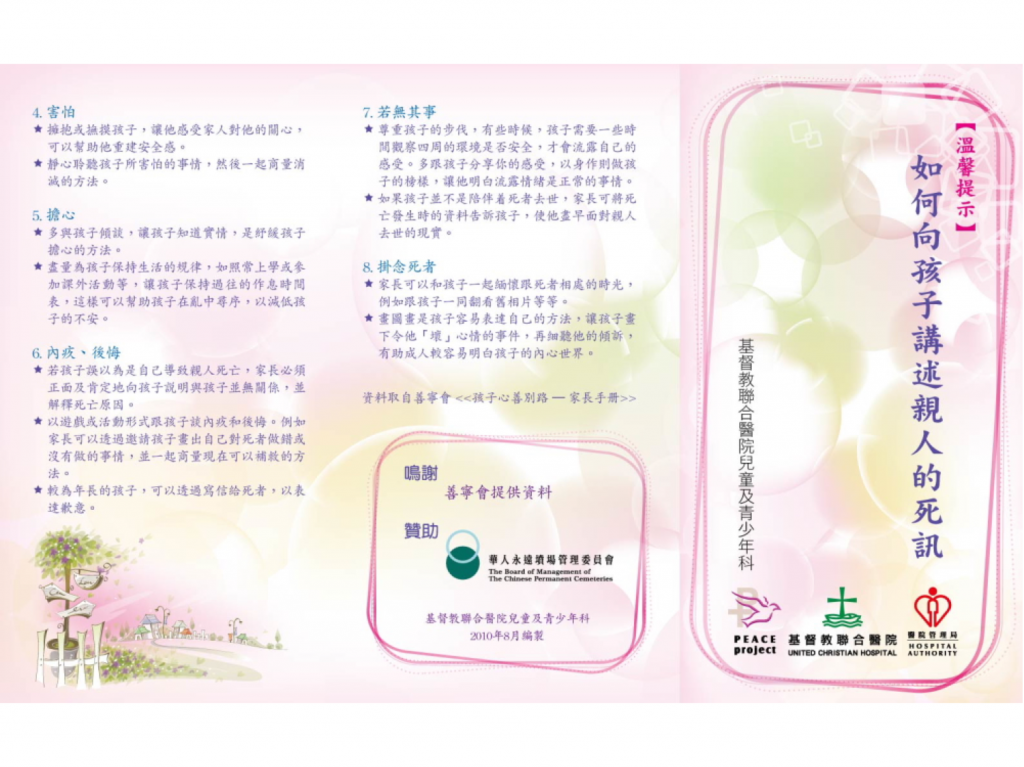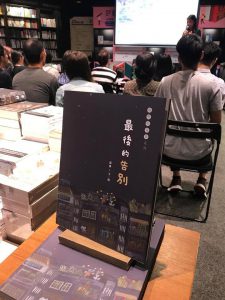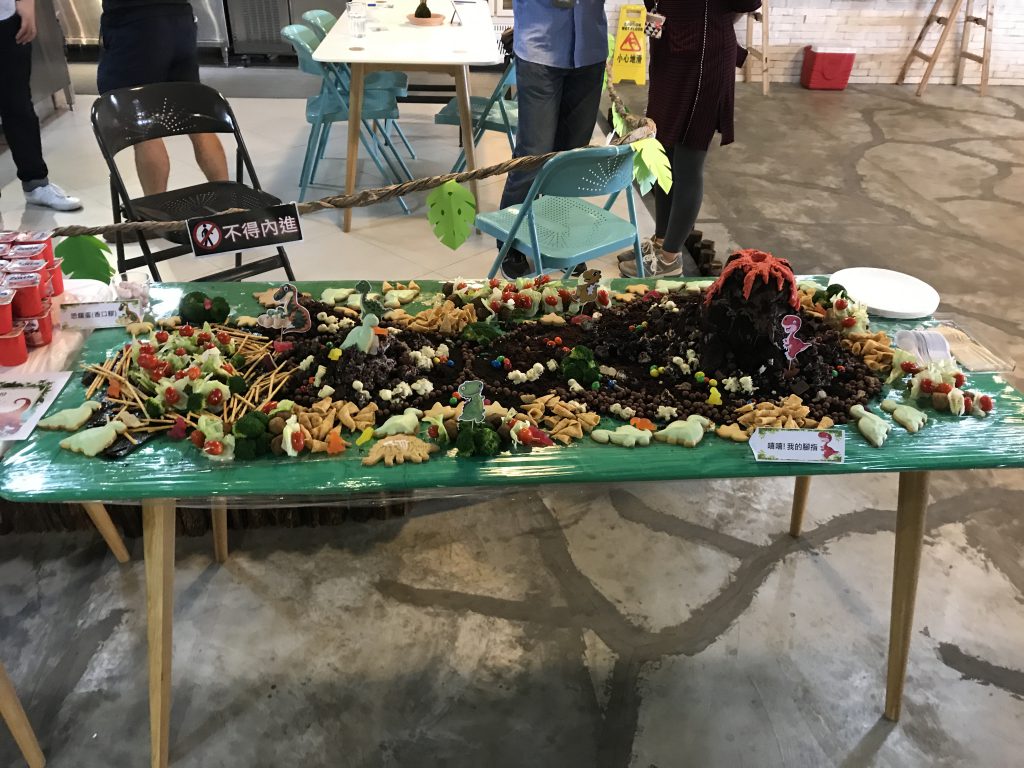
The development of death education for children in Hong Kong still has a long way to go.
By Kajal Aidasani
Molin Lin Kwok-yin recalls her encounter with an 8-year-old boy with brain cancer during a home visit to check on the child’s condition and offer psychological support to his mother.
“The mother told me when she was helping her son shower, the son asked if he was a burden,” says Lin, professional service manager of the Children’s Palliative Care Foundation.

“A situation like this could have been a lesson for death education, to reassure children that they are loved and have not done anything wrong. In this case, the mother burst into tears and could not respond to his question,” she adds.
Lin stresses that parents, schools, and society all play important roles in death education.
“Children have the right to know more about death, but parents are too protective and afraid to bring up the issue.”
“Children have the right to know more about death, but parents are too protective and afraid to bring up the issue. Another case that I handled was an 8-year-old girl with a brain tumour. The child encouraged her father by saying that death was just a part of life,” Lin says.
Miranda Leung Mei-mui, a retired nurse of Hong Kong Children’s Hospital with 30 years of experience in paediatrics, shares Lin’s thoughts.
She thinks life and death education is important and should be taught from kindergarten to university.
“Frontline medical workers make use of communication tools to help children understand and cope with death in hospitals. Apart from speaking to children, means such as pictures, videos, music, and toys can also be used,” Leung says.
Leung recalls that when she was a nurse, she showed pictures of a pretty flower and a wilted flower to a child who was unwilling to be admitted to the hospital for urgent treatment.
“I asked her to choose the picture she liked. Then I explained if she wanted to be healthy like the pretty flower, she would have to undergo treatment at the hospital,” Leung says.
Leung says they once invited a staff member from the Children’s Cancer Foundation to simulate how a funeral was like to a child with toys after his grandfather passed away. They also taught the child to show love to his grandfather by folding origami.

“Children should be taught about death or else some might think that (death happens) because they are naughty.”
“Children should be taught about death or else some might think that (death happens) because they are naughty. The use of artwork and picture books should not be overlooked. It is also okay to use the word ‘death’,” Leung adds.
While there are many English death-related picture books, only a handful are published in Chinese in Hong Kong. Picture book and map illustrator Connie Yuen Ming-shan was involved in the production of two of them.
“People used to think picture books published by NGOs are not appealing. By collaborating with them, I want to develop more creative materials to arouse public awareness about end-of-life education,” Yuen says.

She has written two picture books. “The Final Farewell” (最後的告別) was published in May 2018 and tells the story of losing a father. Her other book, “The Big Yellow Lion Under Lion Rock” (獅子山下的黃大獅) was published in December 2020 and is about paying tribute at a graveyard.
Funerals with different kinds of religious rituals and Hong Kong’s streets are featured in Yuen’s book about death. “Hong Kong deserves to have its own death-related picture books in a local context,” she says.
Yuen thinks that parents in Hong Kong do not value death education enough. They only buy picture books that serve task-oriented purposes, such as those teaching children punctuality, politeness, and hard work.
“We give out free copies to district councillors and hold book talks. We even promote our books to social workers, teachers, and nurses to spark open discussions, and for both children and adults to enjoy a good storytime,” she says.
The illustrator is currently working on three books that introduce death to the intellectually challenged, a project which is the first of its kind in Hong Kong.
She believes everyone should learn about the process – from being diagnosed, treated, and admitted to hospital to dying – so as to be mentally prepared.
“It takes years for Hong Kong to develop picture books and death education…With or without the pandemic, there is an urgency to learn about death. And learning about death teaches us to treasure the time we are alive,” Yuen says.
Wallace Chan Chi-ho, associate professor of the Department of Social Work at the Chinese University of Hong Kong, is also working on a death-related picture book.
The book is about bereaved siblings and how to handle the death of a loved one in the family.
Chan and his colleagues plan to hold book workshops and produce guidelines for parents and professionals about how the book can be used.

“Many people think children are too young to understand death. Children just do not know how to articulate their feelings, but it does not mean that they cannot understand.”
“Many people think children are too young to understand death. Children just do not know how to articulate their feelings, but it does not mean that they cannot understand,” Chan says.
He points out death remains a taboo in today’s Chinese community.
“There is a lack of formal death education. Teaching suicide prevention is not enough. Given the alarming suicide situation, the government cannot afford to put death into the school curriculum fearing that students might feel even more stressed,” he says.
Chan thinks it is important to equip professionals such as nurses, doctors, and social workers with knowledge about life and death education.
“Children can understand death is normal through education. In a broader sense, they can learn how to cope with suffering while still embracing life and finding life worthwhile,” the professor says.
Edited by Sarah Ryou
Sub-edited by Patricia Ricafort






































